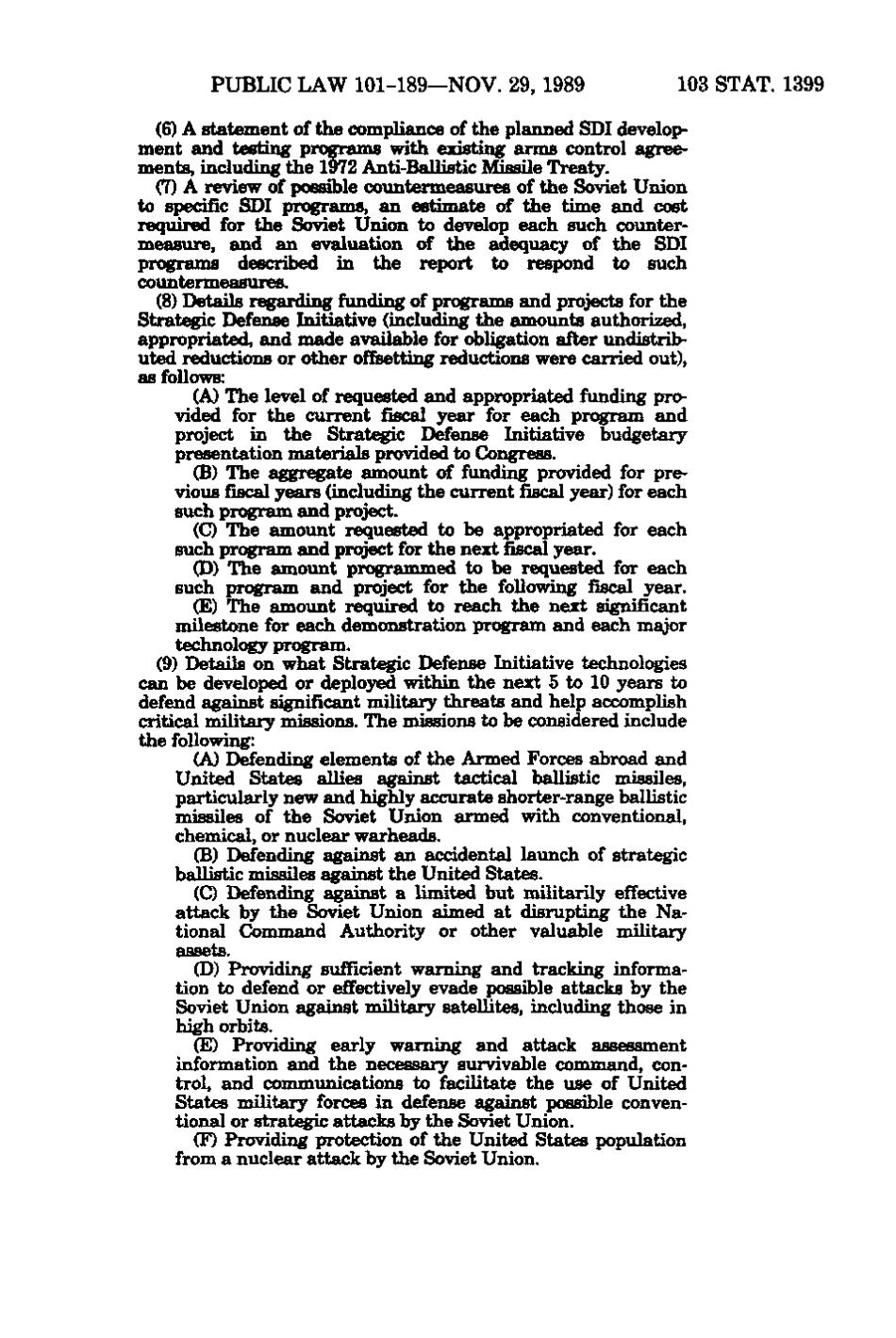PUBLIC LAW 101-189—NOV. 29, 1989 103 STAT. 1399 (6) A statement of the compliance of the planned SDI develop- ment and testing progprams with existing arms control agree- ments, including the 1972 Anti-Ballistic Missile Treaty. (7) A review of possible countermeasures of the Soviet Union to specific SDI programs, an estimate of the time and cost required for the Soviet Union to develop each such counter- measure, and an evaluation of the adequacy of the SDI programs described in the report to respond to such countermeasures. (8) Details regarding funding of progreuns and projects for the Strategic Defense Initiative (including the amounts authorized, appropriated, and made available for obligation after undistrib- uted reductions or other offsetting reductions were carried out), as follows: (A) The level of requested and appropriated funding pro- vided for the current fiscal year for each program and project in the Strategic Defense Initiative budgetary presentation materials provided to Congress. (B) The aggregate amount of funding provided for pre- vious fiscal years (including the current fiscal year) for each such program and project. (CJ) The amount requested to be appropriated for each such program and project for the next fiscal year. (D) The amount programmed to be requested for each such program and project for the following fiscal year. (E) The amount required to reach the next significant milestone for each demonstration program and each major technology program. (9) Details on what Strategic Defense Initiative technologies can be developed or deployed within the next 5 to 10 years to defend against significant military threats and help accomplish critical military missions. The missions to be considered include the following: (A) Defending elements of the Armed Forces abroad and United States allies against tactical ballistic missiles, particularly new and highly accurate shorter-range ballistic missiles of the Soviet Union armed with conventional, . chemical, or nuclear warheads. (B) Defending against an accidental launch of strategic ballistic missiles against the United States. (C) Defending against a limited but militarily effective attack by the Soviet Union aimed at disrupting the Na- tional (jommand Authority or other valuable military assets. (D) Providing sufficient warning and tracking informa- tion to defend or effectively evade possible attacks by the Soviet Union against military satellites, including those in high orbits. (E) Providing early warning and attack assessment information and the necessary survivable command, con- trol, and communications to facilitate the use of United States military forces in defense against possible conven- tional or strategic attacks by the Soviet Union. (F) Providing protection of the United States population from a nuclear attack by the Soviet Union.
�
